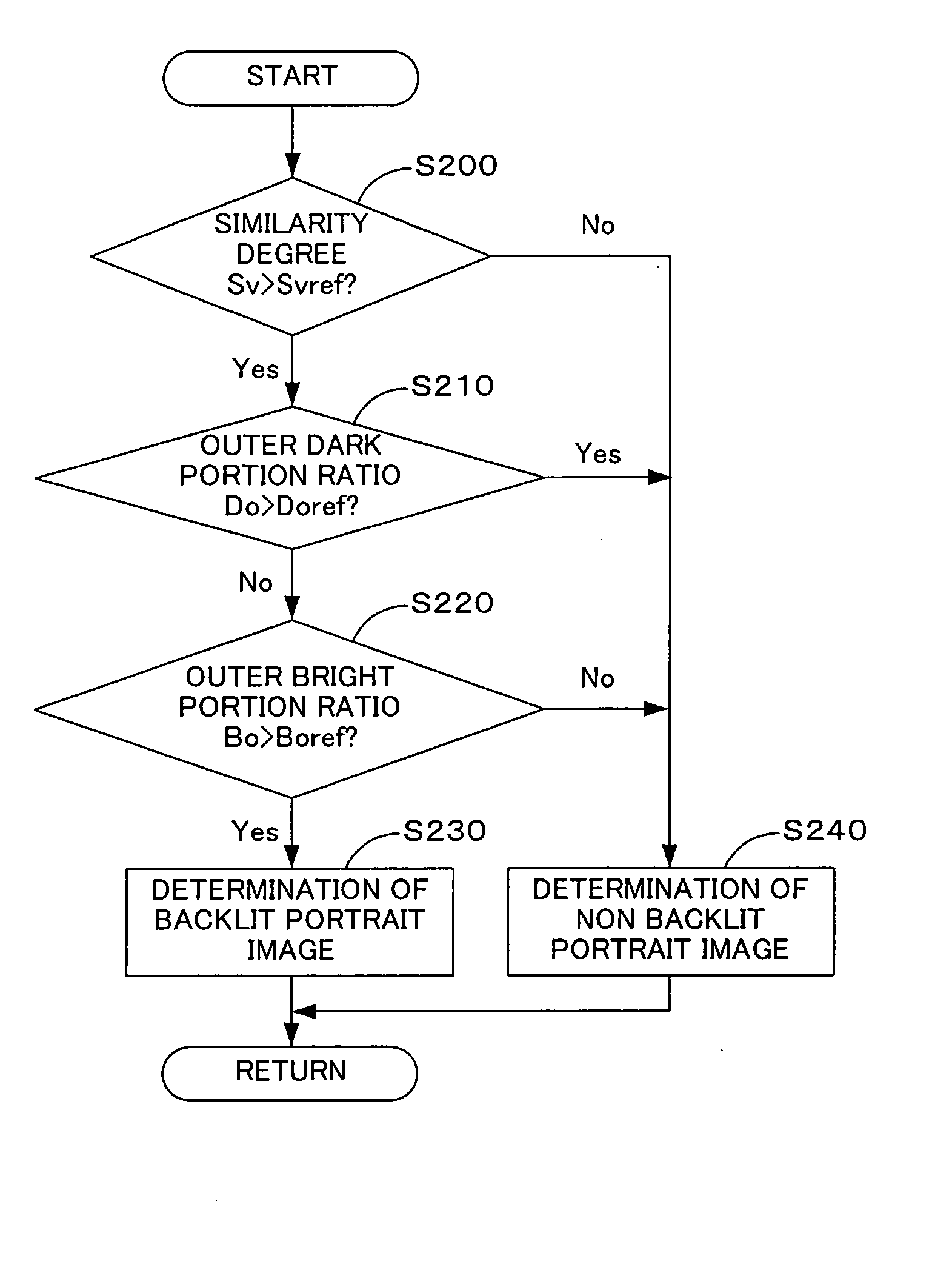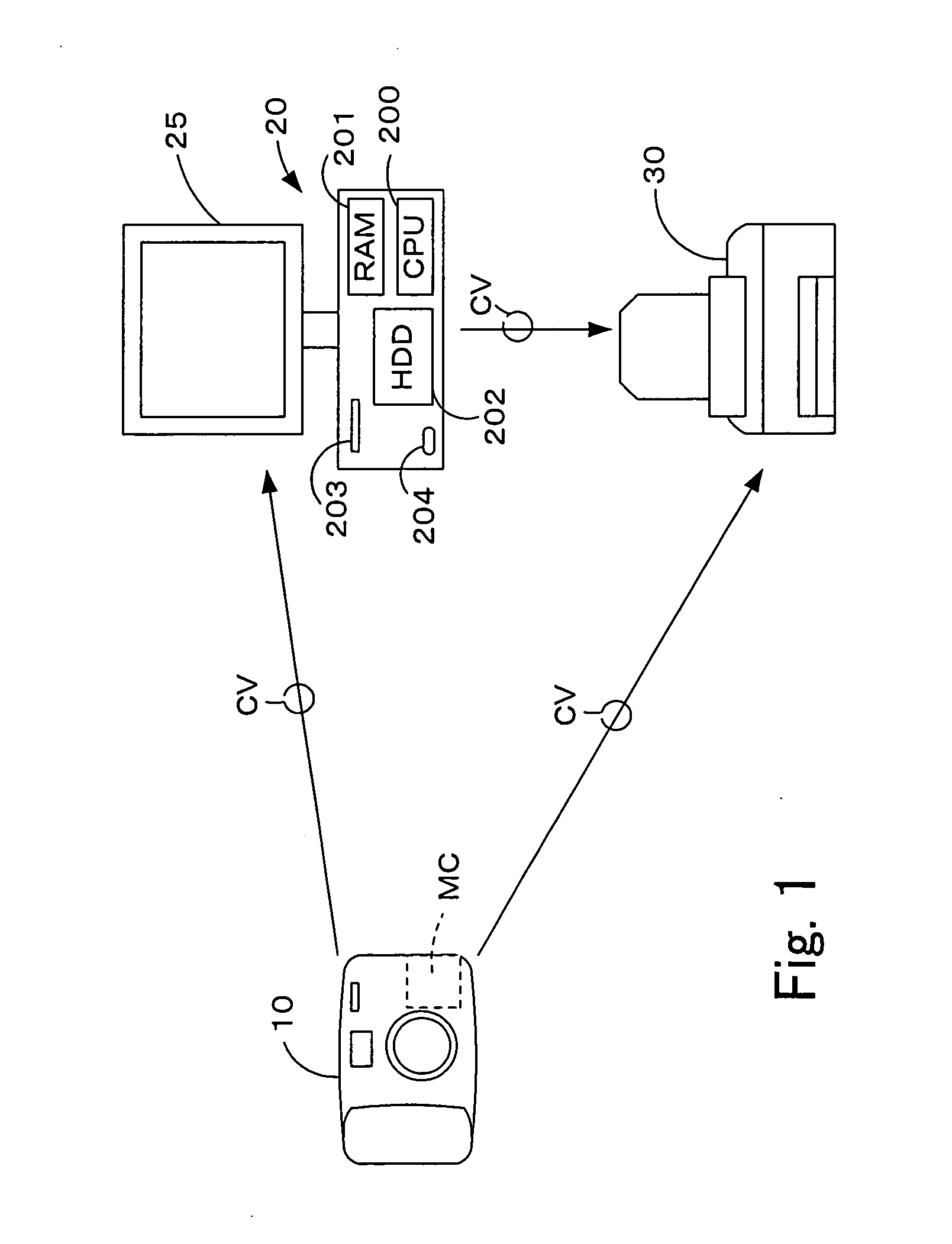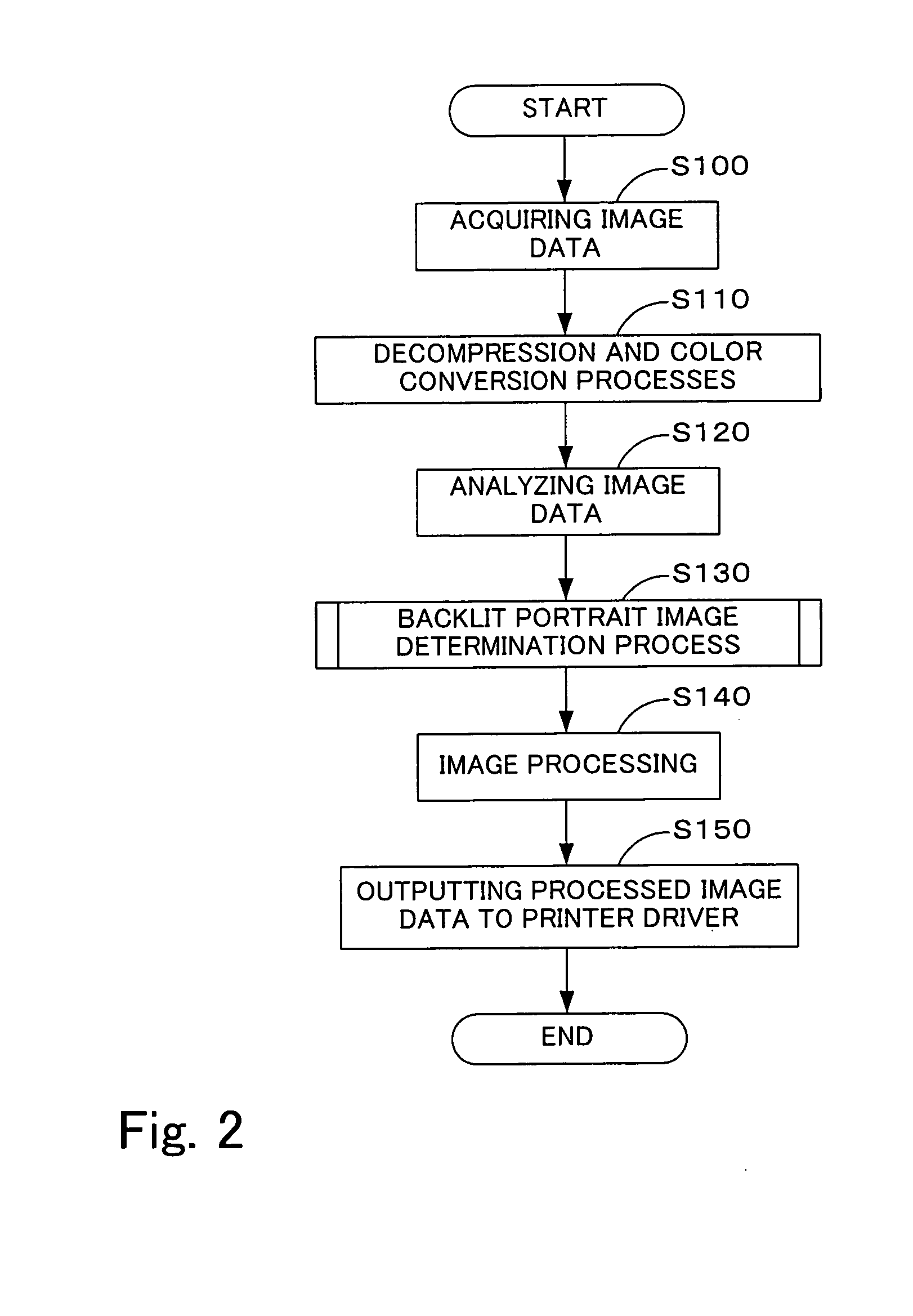Determination of portrait against back light
- Summary
- Abstract
- Description
- Claims
- Application Information
AI Technical Summary
Benefits of technology
Problems solved by technology
Method used
Image
Examples
first embodiment
[0035]
[0036] A. Configuration of Image Processing System
[0037] A configuration of an image processing system to which an image processing device according to a first embodiment may be applied is described with reference to FIG. 1. FIG. 1 is a schematic diagram illustrating an exemplary image processing system that includes a personal computer as the image processing device according to the first embodiment.
[0038] The image processing system includes a digital still camera 10 as an input device that generates image data, a personal computer 20 as an image processing device that determines on whether the image data generated by the digital still camera 10 is image data of backlit portrait image and that performs image processing to output print image data, and a color printer 30 as an output device that uses the print image data to output the image. Alternatively, the color printer 30 may have the functions of image processing as included in the personal computer PC. In such a case,...
second embodiment
[0064]
[0065] A backlit portrait image determination process according to a second embodiment is described below with reference to FIG. 8. FIG. 8 is a flowchart showing a processing routine of backlit portrait image determination process according to the second embodiment. In the following description, steps of FIG. 8 identical with those of the first embodiment described above are assigned the same step numbers as those in the first embodiment and will not be explained further. In addition, an image processing device according to the second embodiment includes components identical with those of the image processing device according to the first embodiment, and thus such components are assigned the same reference symbols as those in the first embodiment and will not be explained further.
[0066] The backlit portrait image determination process according to the second embodiment initially determines whether the image data GD to be processed corresponds to a portrait image instead of th...
third embodiment
[0075]
[0076] A backlit portrait image determination process according to a third embodiment is described below with reference to FIG. 9. FIG. 9 is a flowchart showing a processing routine of backlit portrait image determination process according to the third embodiment. In the following description, steps of FIG. 9 identical with those of the first or second embodiment are assigned the same step numbers and will not be explained further. In addition, an image processing device according to the third embodiment includes components identical with those of the image processing device according to the first embodiment, and thus such components are assigned the same reference symbols as those in the first embodiment and will not be explained further.
[0077] The third embodiment uses the similarity degree to determine whether the image data to be processed is image data of backlit portrait image (step S200), and then in order to confirm the validity of the determination using the similari...
PUM
 Login to View More
Login to View More Abstract
Description
Claims
Application Information
 Login to View More
Login to View More - R&D
- Intellectual Property
- Life Sciences
- Materials
- Tech Scout
- Unparalleled Data Quality
- Higher Quality Content
- 60% Fewer Hallucinations
Browse by: Latest US Patents, China's latest patents, Technical Efficacy Thesaurus, Application Domain, Technology Topic, Popular Technical Reports.
© 2025 PatSnap. All rights reserved.Legal|Privacy policy|Modern Slavery Act Transparency Statement|Sitemap|About US| Contact US: help@patsnap.com



